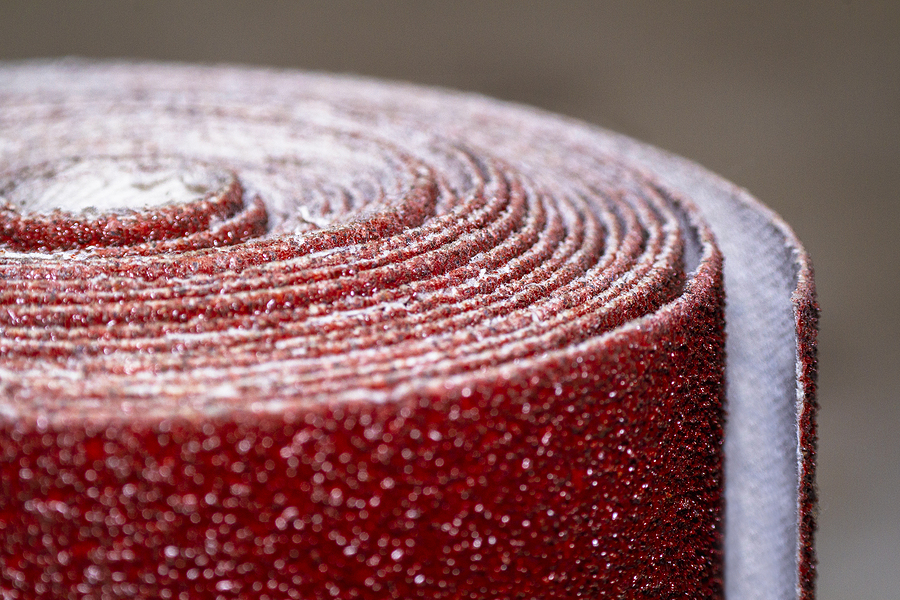Posted by Sandpaper America on May 31st 2023
Common Questions Answered About Sanding Belts and Their Usage
Using sanding belts is an essential part of many woodworking and metalworking projects. But with so many different types, sizes, and grits available, it can be difficult to know which ones are best for your project. In this blog post, we’ll answer some of the most common questions about sanding belts and their usage. We’ll explain the differences between wide sanding belts and narrow ones; discuss what grits you should use for different materials; and suggest how often you should replace your belt.
By the end of this blog, you’ll have a better understanding of how to choose the right type of belt for every job!

Frequently Asked Questions About Sanding Belts
What is the difference between wide sanding belts and narrow sanding belts?
Wide sanding belts are typically used for larger projects, such as stock removal or removing a finish. They provide more surface area which can help with stock removal and leveling materials. Narrow sanding belts are best for smoothing out details and shaping curves. They tend to be more accurate at following intricate shapes due to their smaller size.
What types of grits should I use for different materials?
The type of grit you choose depends on the material that you’re working with. Coarse grits (such as 36-60) work well on softwoods like pine or fir; medium grits (80-120) work well for hardwoods like oak or maple; and fine grits (150-220) are best for non-wood materials such as plastic, metal, and fiberglass.
What type of sanding belt is the best to use?
Cloth sanding belts are usually the most durable option. They last longer than paper belts and provide a smoother finish. For heavier jobs, opt for an open coat belt which has more flexibility and can remove material quickly without clogging up with dust. The size of the belt should also be determined by the project you’re working on – narrower belts are better for smaller pieces while wider ones can handle larger surfaces.
Which belt do I use for metalworking?
When it comes to sanding metal during a metalworking project, it's important to select the right sanding belt. The right belt can help you achieve a smoother and more polished finish on your metal piece. One popular option is a flexible J weight sanding belt. This belt comes in a variety of grits, making it versatile for all stages of metal sanding. Another option is a zirconia sanding belt, which is known for its durability and heat-resistant capabilities. You can also go with a cloth X weight belt in aluminum oxide. Overall, it's important to keep in mind the specific needs of your metalworking project in order to select the best sanding belt for the job.
Which belt do I use for woodworking?
When it comes to woodworking, sanding is an essential step in achieving a smooth and polished finish. But choosing the right sanding belt can be tricky. Two common options are the cloth x weight belt and the flexible j weight belt. The cloth X weight belt is made with a heavier backing and is great for removing rougher imperfections. On the other hand, the flexible J weight belt is more pliable and better suited for smoothing and finishing surfaces. Ultimately, the choice depends on the specific task at hand and personal preference. It's important to experiment with different belts and grits to find what works best for your woodworking projects. Don’t forget about pump sleeves for woodworking too.
How often should I replace my sanding belt?
It depends on how often you use your belt and the type of material you’re working with. Generally speaking, sanding belts should be replaced after every 10-20 hours of use or whenever they become worn down and ineffective. It’s also important to keep an eye out for any fraying or tearing that may occur during use, as this can lead to damage to the belt and potential injury if it comes apart during operation.
Conclusion
We hope this blog post has helped answer some of your questions about sanding belts and their usage. Remember to always choose a belt size and grit that is appropriate for the material you are working with and replace your belt when necessary! With proper maintenance, your sanding belts will last you a long time and give you great results.
Are you eager to stock up your workspace with the highest quality sanding tools? Contact Sandpaper America at 1-800-860-7263 (SAND) to order from a wide variety of sandpaper products for metal working in Indiana. Choose from aluminum oxide cloth wide belts, Cloth X-Weight Belts, aluminum oxide sanding sheets, and much more. Call to place an over-the-phone order or go online and buy directly from our website!
Related Posts:
Introduction
to Belt Sanders
5
Tips for Choosing the Right Abrasive Belt for Your Job
How
to Take Care of Sanding Belts

